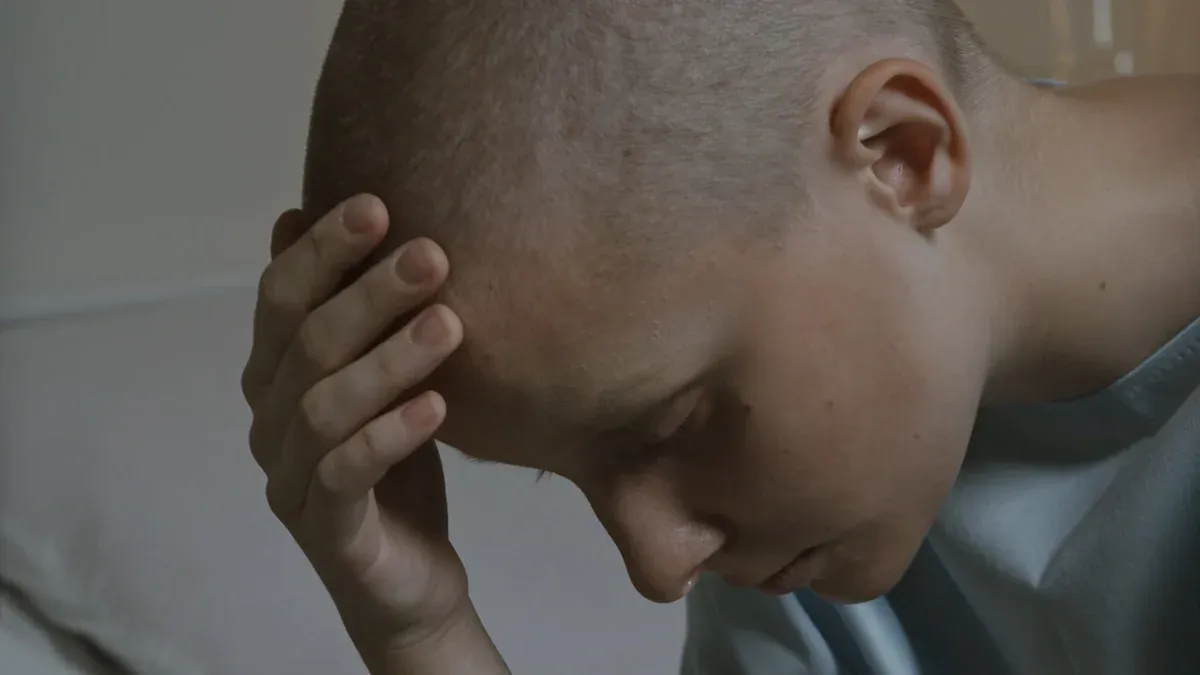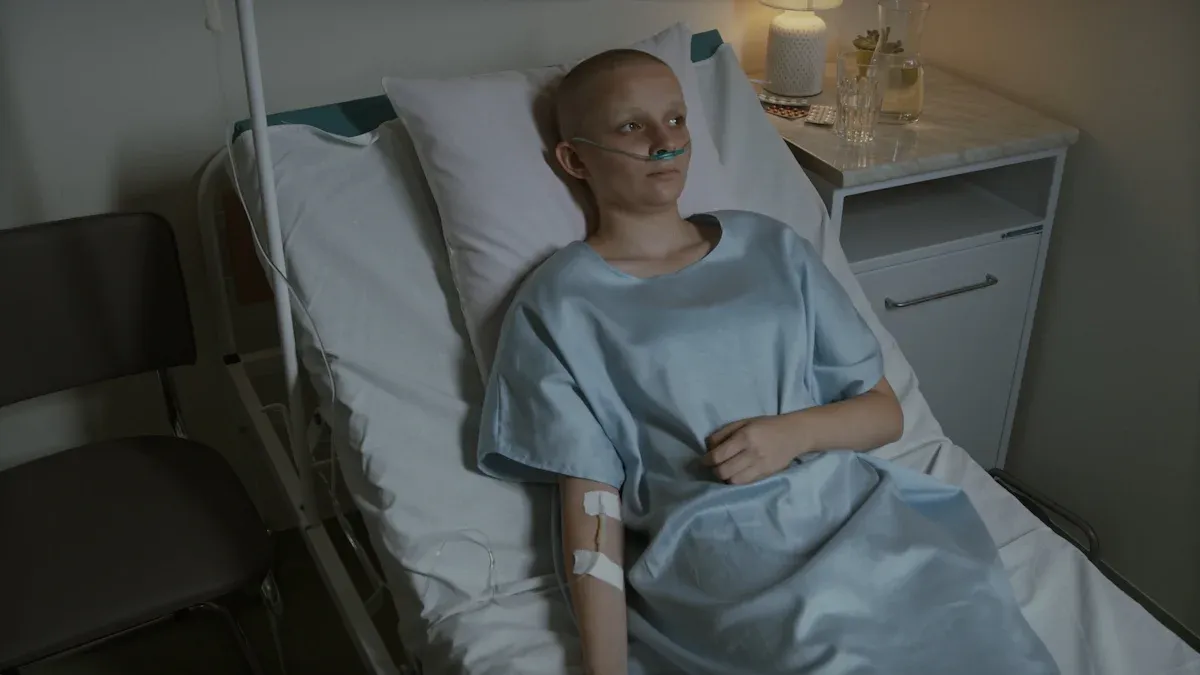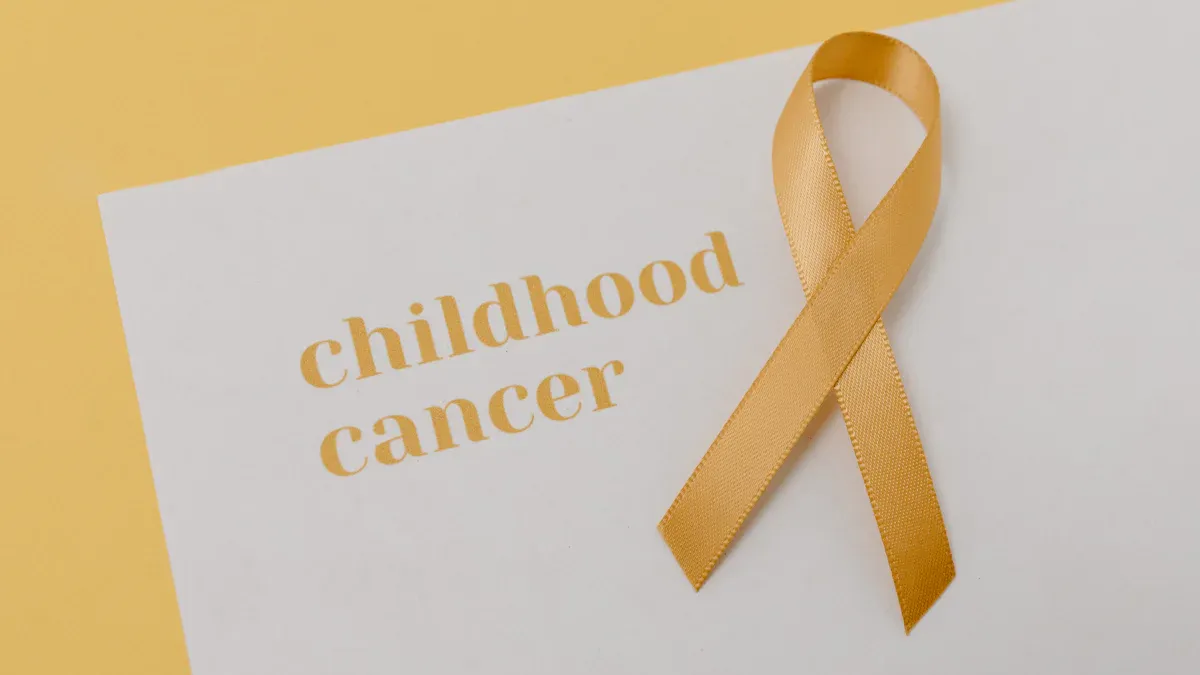What is Neuroblastoma and How Does It Affect Children

Neuroblastoma is a rare type of cancer that forms in nerve tissue, primarily affecting children under five years old. It often starts in the adrenal glands, which sit above the kidneys. However, it can also develop in other areas, such as:
This condition can spread quickly, making early detection essential. Globally, neuroblastoma affects thousands of children each year, with over 5,500 cases reported in 2021. Understanding its symptoms and effects can help you recognize warning signs early and seek timely medical care.
Key Takeaways
Neuroblastoma is a rare cancer in kids under five. Finding it early helps with better treatment results.
Look for signs like lumps in the belly or chest, tiredness, or unexplained fever. These may mean a doctor is needed quickly.
Knowing neuroblastoma stages helps doctors plan treatments. Stages go from small tumors to cases spreading to other body parts.
Families need support during this time. Talking to others and finding help can give emotional strength.
Survivors need regular check-ups. Watching for long-term problems and staying healthy can make life better.
What is Neuroblastoma?
Definition and Overview
Neuroblastoma is a type of cancer that develops in immature nerve cells, often before birth. It typically begins in the adrenal glands, located above the kidneys, but it can also form in other areas like the chest, abdomen, or spine. This cancer is classified into stages based on its spread and severity.
Stage | Description |
|---|---|
Stage 1 | Localized cancer that has stayed in the area where it originated. All visible tumor was removable through surgery. |
Stage 2A | The cancer is still confined to the same area but not all visible tumor could be removed. |
Stage 2B | The cancer is on one side but could not be completely removed; neuroblastoma cells are present in nearby lymph nodes. |
Stage 3 | The cancer has not spread to distant parts but has spread to nearby lymph nodes or cannot be removed by surgery. |
Stage 4 | The cancer spreads to distant sites such as the liver, bone marrow, and other organs. |
Stage 4S | Affects children under one year; localized cancer that may have spread to lymph nodes and liver. |
Recurrent | Return of the cancer after treatment. |
Understanding these stages helps doctors determine the best treatment plan for children diagnosed with neuroblastoma.
Causes and Risk Factors
The exact cause of neuroblastoma remains unclear, but researchers have identified several factors that may increase the risk:
Certain birth defects may raise the likelihood of developing this cancer.
Genetic changes during fetal development are strongly linked to neuroblastoma.
Rarely, a family history of neuroblastoma can play a role.
Maternal exposure to toxic substances during pregnancy is being studied for potential connections.
Recent studies have also revealed specific genetic changes in neuroblastoma cells. These include amplifications, deletions, and mutations in genes like ALK and MYCN, which influence the cancer's aggressiveness. Alterations in the ATRX tumor suppressor gene are more common in older children and often indicate high-risk cases.
Who is Most Affected?
Neuroblastoma primarily affects children under the age of five. It is the most common cancer in infants, with most cases diagnosed before the age of one. Boys are slightly more likely to develop neuroblastoma than girls. While rare, this cancer accounts for about 6% of all childhood cancers.
Children with a family history of neuroblastoma or certain genetic conditions may face a higher risk. However, most cases occur sporadically, without any clear hereditary link. Early detection is critical, as it can significantly improve treatment outcomes.
Symptoms of Neuroblastoma

Symptoms by Tumor Location
Abdominal Tumors
When neuroblastoma develops in the abdomen, you may notice a lump or swelling in your child’s belly. This lump often feels firm and doesn’t cause pain. Your child might also experience a sense of fullness, even after eating small amounts, or have difficulty with bowel movements or urination.
Chest Tumors
Tumors in the chest can press against vital structures, leading to noticeable symptoms. Your child might have swelling in the face, neck, or upper chest. Breathing or swallowing could become difficult, and they may develop a persistent cough. In some cases, dizziness or headaches occur due to pressure on blood vessels.
Spinal Tumors
Spinal tumors can cause significant discomfort and mobility issues. You might observe weakness, numbness, or even paralysis in your child’s arms or legs. Back pain is another common symptom, and in severe cases, your child may struggle to move certain parts of their body.
General Symptoms
Fatigue and Appetite Loss
Children with neuroblastoma often feel unusually tired and may lose interest in eating. This fatigue can result from the cancer affecting their bone marrow, leading to low blood cell counts.
Fever, Weight Loss, and Bruising
Unexplained fever and weight loss are common warning signs. You might also notice bruising around the eyes or bluish bumps on the skin. These symptoms often indicate that the cancer has spread to other parts of the body, such as the bones or bone marrow.
Rare Syndromes Associated with Neuroblastoma
Opsoclonus-Myoclonus Syndrome (OMS)
This rare neurologic condition sometimes occurs in children with neuroblastoma. OMS causes rapid, uncontrolled eye movements and muscle jerks. It is believed to result from an immune response triggered by the cancer. While treatments like immunosuppressive therapies can help manage symptoms, long-term effects on your child’s development may persist.
Paraneoplastic Syndromes
Paraneoplastic syndromes are rare but can accompany neuroblastoma. These syndromes occur when the cancer triggers abnormal immune responses, leading to symptoms like hormonal imbalances or nerve dysfunction.
How Neuroblastoma Affects Children
Physical Effects
Pain and Mobility Challenges
Neuroblastoma can cause significant physical discomfort, especially when it spreads to the bones or compresses the spinal cord. You might notice your child experiencing:
Bone pain, which could lead to limping or difficulty walking.
Paralysis in severe cases, often due to spinal cord compression.
These symptoms can limit your child’s ability to move freely, affecting their daily activities. Early intervention is crucial to manage these challenges and prevent further complications.
Organ Function Impairment
When neuroblastoma affects organs like the liver, kidneys, or lungs, it can disrupt their normal function. For example, tumors in the abdomen may press against the digestive system, causing issues with eating or bowel movements. Similarly, chest tumors might impair breathing or circulation. These effects can lead to serious health concerns, requiring immediate medical attention.
Emotional and Developmental Impact
Coping with Hospitalization
Hospital stays and treatments can be emotionally taxing for children. Infants and toddlers often fear separation from their parents, which may result in tantrums or aggressive behavior. School-age children might feel sadness or anger about missing school and losing their normal routines. Teenagers, on the other hand, may struggle with feelings of independence and identity, sometimes rebelling against treatment.
Effects on Family and Social Dynamics
Neuroblastoma doesn’t just affect the child; it impacts the entire family. You may find it challenging to balance caregiving with work or other responsibilities. Siblings might feel neglected or confused about the situation. Children undergoing treatment often experience social withdrawal, anxiety, or depression. Survivors may also face long-term emotional challenges, such as attention deficits or difficulty reintegrating into social settings.
Providing emotional support and maintaining open communication can help your child and family navigate these challenges. Building a strong support network can also make a significant difference in coping with the emotional toll of neuroblastoma.
Diagnosis and Treatment of Neuroblastoma

Diagnostic Process
Imaging Tests (CT, MRI, Ultrasound)
Doctors use several imaging tests to identify neuroblastoma and determine its spread. These tests include:
Ultrasound: A quick, radiation-free option often used first in young children.
MRI: Provides detailed images of soft tissues, especially around the spine.
CT scan: Combines multiple x-ray images to create cross-sectional views of the body.
MIBG scan: Helps detect the spread of neuroblastoma to other areas.
Bone scan: Identifies if cancer has reached the bones.
PET scan: Useful for certain neuroblastomas when MIBG absorption is low.
These imaging tools allow doctors to pinpoint the tumor's location and assess its impact on nearby tissues.
Biopsy and Laboratory Analysis
A biopsy confirms the diagnosis by examining a sample of the tumor under a microscope. Doctors may also perform blood and urine tests to detect specific markers linked to neuroblastoma. These tests help determine the cancer's stage and guide treatment planning.
Treatment Options
Surgery
Surgery aims to remove as much of the tumor as possible. For localized neuroblastoma, surgery alone may be sufficient. However, in advanced cases, surgery often works alongside other treatments.
Chemotherapy and Radiation Therapy
Chemotherapy uses drugs to kill cancer cells or stop their growth. Radiation therapy targets specific areas to shrink tumors. While effective, these treatments can cause side effects like fatigue, nausea, and skin changes. Long-term effects may include growth issues or increased cancer risk.
Immunotherapy and Stem Cell Transplants
Immunotherapy boosts the immune system to fight cancer. Combining immunotherapy with retinoids reduces the risk of recurrence. For high-risk cases, stem cell transplants follow high-dose chemotherapy to replace damaged bone marrow. These advanced treatments improve survival rates, especially for aggressive neuroblastoma.
Importance of Early Detection
Early detection plays a critical role in improving outcomes. Identifying neuroblastoma at an early stage allows for faster treatment, which can significantly increase survival rates. For high-risk cases, survival rates range from 40% to 50%. Research continues to explore newborn screening as a way to catch the disease earlier and improve prognosis.
Managing Life with Neuroblastoma
Support for Parents and Caregivers
Building a Support Network
As a parent or caregiver, building a strong support network can help you navigate the challenges of neuroblastoma. Connecting with others who understand your situation provides emotional strength and shared experiences. You can:
Join local or online support groups to meet families facing similar challenges.
Participate in virtual groups that offer safe spaces to share and learn.
Seek professional mental health care if you need additional support.
Talking to someone who has been through a similar journey can make a significant difference. These connections often provide comfort and practical advice during difficult times.
Accessing Counseling and Resources
Accessing counseling and educational resources can help you manage the emotional toll of neuroblastoma. Many organizations offer tools to guide you through treatment and recovery. For example:
Ryan's Case for Smiles provides strategies for coping with neuroblastoma and resources for caregivers and siblings.
Books like Learning to Dance in the Rain and Childhood Cancer Survivors offer insights and practical advice.
Local pediatric cancer support groups can connect you with families who share similar experiences.
Professional therapists and social workers specializing in pediatric cancer can also help you process emotions and develop coping strategies.
Helping Children Cope
Maintaining a Routine
Maintaining a sense of normalcy is essential for your child’s well-being. A consistent routine can provide comfort and stability. You can:
Set regular nap and meal times.
Allow playtime when your child feels well enough.
Bring familiar items from home to the hospital, like toys or blankets.
Encouraging fun activities, such as playing games or spending time with friends, helps your child feel like a kid again. These moments of joy can distract them from their illness and improve their mental health.
Encouraging Open Communication
Open communication helps your child feel secure and less anxious. Include them in their care plan and provide honest, age-appropriate information about their condition. Listening to their concerns and answering questions can build trust and reduce fear.
You can also encourage your child to express their feelings through journaling, drawing, or talking to a counselor. Emotional support plays a crucial role in helping them cope with the challenges of neuroblastoma.
Long-Term Outlook and Follow-Up Care
Survivors of neuroblastoma often face long-term health challenges, but regular follow-up care can improve their quality of life. After treatment, you should:
Report any new symptoms to your doctor promptly.
Develop a survivorship care plan that includes a summary of the diagnosis, treatment, and a schedule for follow-up exams.
Monitor for potential late effects, such as growth issues, hearing loss, or emotional challenges.
Most children treated for neuroblastoma now survive into adulthood. However, they may experience side effects like anxiety, attention deficits, or social withdrawal. Regular check-ups and a healthy lifestyle, including proper nutrition and physical activity, can support their long-term well-being.
Tip: Keep a record of your child’s medical history and treatment details. This information will be invaluable for future healthcare needs.
Neuroblastoma is a rare but serious cancer that affects young children. Early detection plays a vital role in improving outcomes. Recognizing symptoms and seeking timely medical care can make a significant difference.
Note: Building a strong support system helps families navigate the challenges of neuroblastoma. Accessing counseling, joining support groups, and staying informed about treatment options can empower you to provide the best care for your child.
With the right resources and emotional support, you can help your child face this condition with strength and hope.
FAQ
What are the early signs of neuroblastoma?
Early signs include a lump in the abdomen or chest, fatigue, loss of appetite, and unexplained fever. You might also notice bruising around the eyes or bluish bumps on the skin. These symptoms often indicate the cancer's spread.
Can neuroblastoma be prevented?
Currently, there’s no known way to prevent neuroblastoma. It often develops due to genetic changes during fetal development. Regular check-ups and awareness of symptoms can help with early detection, which improves treatment outcomes.
How is neuroblastoma different from other childhood cancers?
Neuroblastoma starts in immature nerve cells, often before birth. It primarily affects children under five years old. Unlike other cancers, it can cause rare syndromes like Opsoclonus-Myoclonus Syndrome (OMS) and paraneoplastic syndromes.
Is neuroblastoma hereditary?
Most cases occur sporadically without a family history. However, a small percentage of cases are linked to inherited genetic mutations. If you have concerns about family history, genetic counseling can provide clarity.
What is the survival rate for neuroblastoma?
Survival rates depend on the cancer’s stage and risk category. For low-risk cases, survival rates exceed 90%. High-risk cases have lower survival rates, ranging from 40% to 50%. Early detection and advanced treatments improve outcomes.
Tip: If you notice unusual symptoms in your child, consult a pediatrician promptly. Early action can make a significant difference.
---
ℹ️ Explore more: Read our Comprehensive Guide to All Known Cancer Types for symptoms, causes, and treatments.
See Also
Cerebral Astrocytoma: Understanding Its Impact on Brain Function
Exploring Blastoma: Different Types and Their Characteristics
Hepatoblastoma: Key Symptoms and What You Should Know
Ependymoma: Symptoms and Insights Into This Brain Tumor
Understanding Hemangioblastoma: Essential Features and Information
